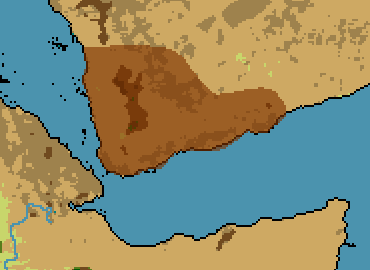Hello and welcome to Rise and Fall of Civilizations II. It has been in the works since Storm’s game ended, and it's thanks to him that we are able to run this next incarnation.
The game is a re-start of the Rise and Fall of Civilizations game that Storm ran earlier this summer and as was stated in the previous game, it bears some similarities to the late Frymonmon’s World in Revolution. While WiR has been great at giving the players a chance to experience a specific period in history, RaFoC focuses more on the entirety of human progress, from sticks and stones to battling for the moon.
This is where Rise and Fall of Civilizations comes in. Unlike map games, players will send orders to Ekon (Ranger900) or I and we will write the updates so that there is a cohesive story. But unlike WiR we will cover a significant amount of time in every update and will rely a lot less on stats and a lot more on IC posts and updates. We hope to make the game flow as smoothly, if not moreso than the original Rise and Fall.
The game is very much a sandbox, but we will keep to at least mild historical plausibility. Most importantly this means that many cultures, countries, empires will rise and fall. It’s in the name after all. We do not think any modern state (except maybe China) can trace its origins directly back to a culture in 2,000 BC. When your culture or country declines or gets wiped out just pick a new one and keep going. We hope that you guys approach the game with the goal of making a cool story rather than “winning” with your country.
We understand that this kind of game may not be everyone’s cup of tea. We am trying to be upfront about what the game is and is not. If you think you are interested in joining read the rules and sign up section.
Rules
Each player will play a culture or country, depending on the level of development and similarity. For example, one player could play the Greek city-states or the Algonquin Native American tribes, though each one encompasses multiple polities. As the game progresses most or all of these will transition into being proper states.
Players will send us (who you send to will be assigned later) two orders per update. Since updates will cover a large period of time these should be pretty general. Going with the Greek city-state example it could be something along “develop a democratic tradition” or “focus on philosophy and natural sciences,” while a French player in the 17th century may send an order “expand aggressively, fighting wars against smaller neighbors.” On occasion we may do a mini-update in between regular ones if we think the events warrant it, but this is unlikely except for major events (though it may become more likely as time goes on an civilizations start to butt heads)
Participation is mandatory – everyone must post at least one IC per turn. As shown in the previous game it is not too much to ask to have the players write some commentary on what is happening in their country. These posts are an important part of how we make a story and are helpful to us in writing the alt-history. Sending orders is also mandatory – given the pace the game will progress at leaving a culture/country unattended for a turn or two is not an option.
When (not if) your culture/country declines or is wiped out you will have the option to pick another one or start a new one. So the players who are currently in the game keep playing unless they do not want to. If someone leaves the game then I will take on new players who can pick an existing culture/country or start a new one.
Sign up
The starting date is 2,000 BC. To sign up you need to fill out a template of the culture/country you want to play. We will be picking 18 (9 maximum for each GM) of the most interesting, diverse, and appealing sign ups and we will start the game. Those who are not picked right away will have a chance to sub in if a player drops out, and their countries may appear as NPCs in the game anyways.
Template:
Culture/country name
Location: [be specific and include the color you want it to be on the map]
People and Society: [structure of the society, religion, and how it functions]
Government: [brief description of who is in charge]
Economy: [the basis of the people’s livelihoods]
Military: [if there is anything resembling one]
Example:
Norte Chico
Location: Coastal regions of the Supe Valley.
People and Society: Religion consists of a diverse pantheon of gods. There are a number of large built-up urban centers. Music and dance are prominent.
Government: Numerous theocratic chiefdoms.
Economy: Agriculture depends heavily on irrigation due to arid conditions. Textiles are woven by hand.
Military: No organized military.
Here is a map of our World in 2,000 BC for inspiration. You are not at all limited to societies that existed OTL, but some plausibility is required. There will not be a flourishing agricultural culture in Alaska or in the middle of the Sahara.
http://upload.wikimedia.org/wikipedia/commons/d/dd/World_2000_BC.svg
IRC Channel
Link: Coldfront
Channel: #WiR_Main
Instructions:
1) Use the link provided above.
2) Choose the Flash app or the Java app.
3) Create a screen name; it’s recommended that you use your forum name, if available.
4) Close the #coldfront channel that opens automatically.
5) In the command box, type “/join #WiR_Main” without the quotation marks.
6) You’re in the chat! Welcome!










